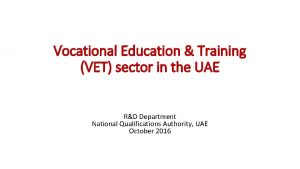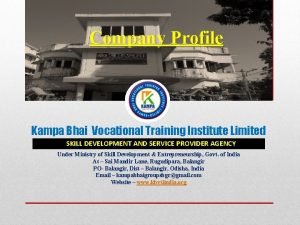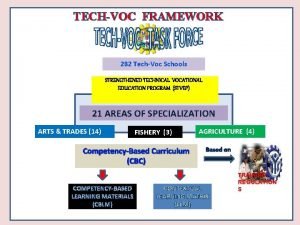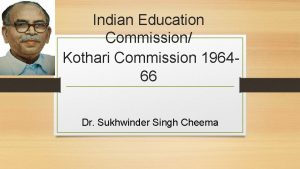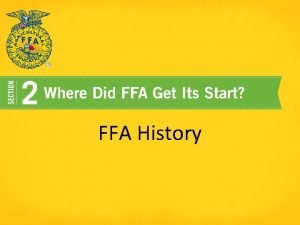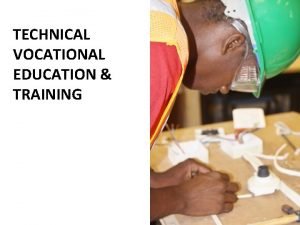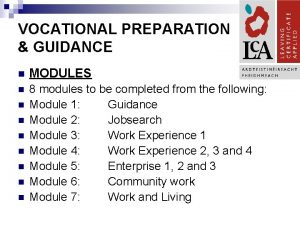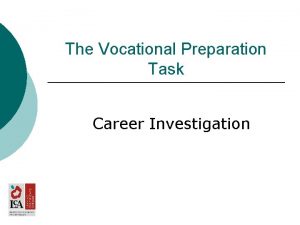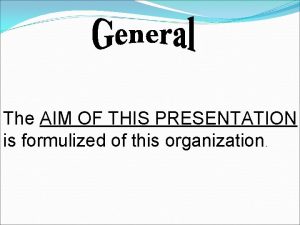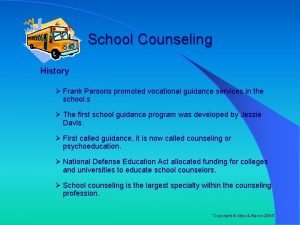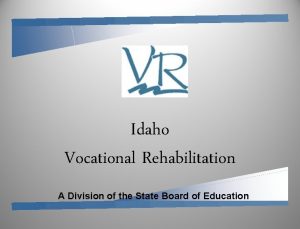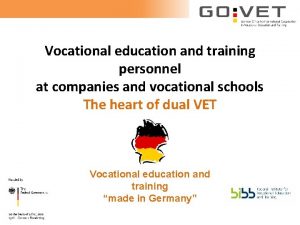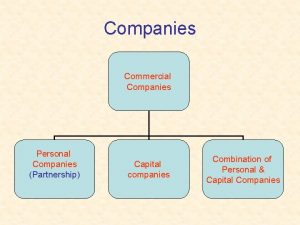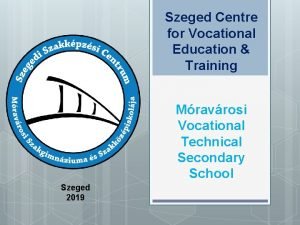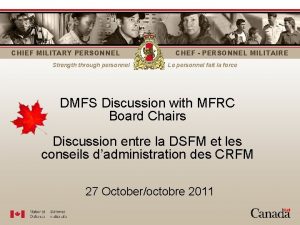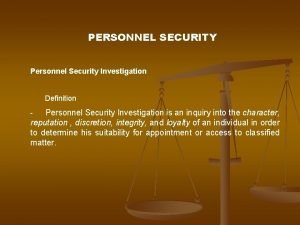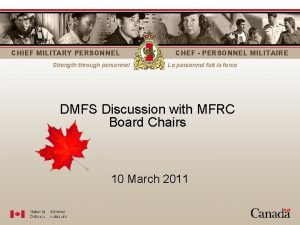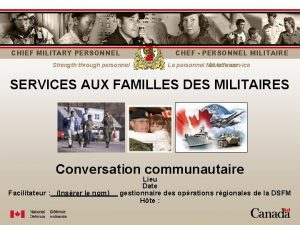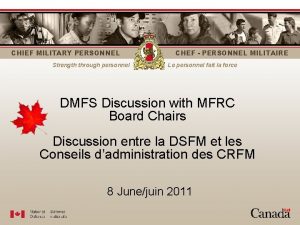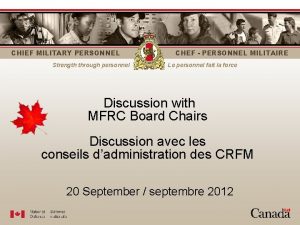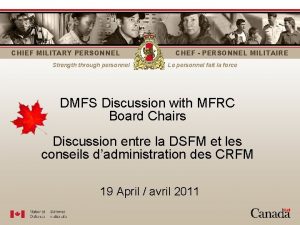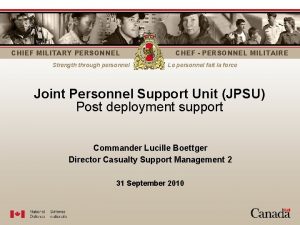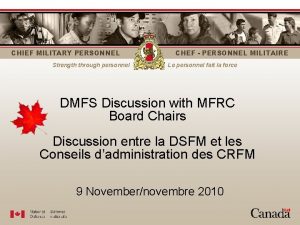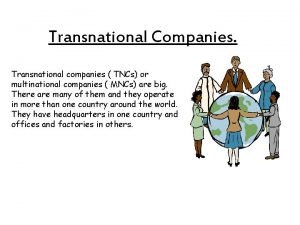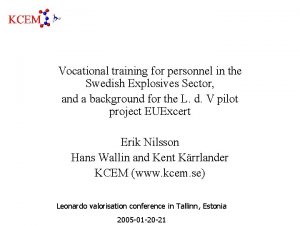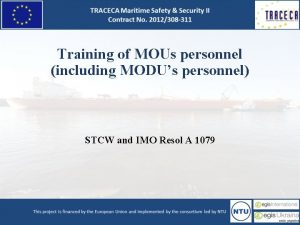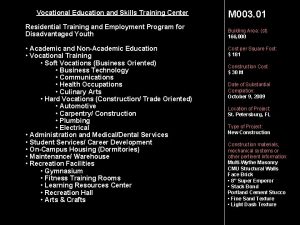Vocational education and training personnel at companies and





















- Slides: 21

Vocational education and training personnel at companies and vocational schools The heart of dual VET Vocational education and training “made in Germany”

Contents I. Who works in dual vocational education and training? II. Tasks in the VET system III. The company as a learning venue – focus on training personnel IV. The school as a learning venue – focus on teaching staff V. Summary VI. Further information

I. Who works in dual vocational education and training? World of work State educational system Social partners, state , and trade and industry School Inspectorate School directors Administration Management, training heads Training personnel in the workplace Trainees/pupils Teaching staff Vocational school • VET personnel working in areas such as training, management and coordination • Dual worlds = “dual” personnel • Joint objective – qualification of trainees/pupils

II. Tasks of personnel in the VET system Task – Organising, implementing, supporting VET Task – Developing standards Representatives • Employers • Employees • State • Chambers • • • Training personnel at the company Company management/training heads Training advisors Staff in inter-company training Career entry support etc. • • • Vocational school teachers School management etc. Task – Examining and certifying Representatives • Employers • Employees • Vocational school Organised by • Chambers • Personnel operate at all “interfaces” of vocational education and training • Personnel are supported/financed by the state and trade and industry • Central role of trainers and teaching staff

II. Tasks of personnel in the VET system Focus – Organising, implementing, supporting VET Company as a learning venue Vocational school as a learning venue Training personnel Teaching staff Approximately 650, 000 trainers registered nationwide with competent bodies (pursuant to Vocational Training Act (BBi. G), Ordinance on Trainer Aptitude (AEVO) • Most work in an ancillary function rather than being full-time Approximately 42, 000 FTEs (2014) • Ratio training personnel/trainees: 1/2 • 6 million skilled workers providing training (without a certificate or with a certificate but not registered with the chambers) • • • Teachers of professional theory and general education • Teachers of occupational practice • Ratio teachers/learners: 1/35 (2014) Division of tasks – various staff working in the companies and at vocational schools Focus of the presentation – “state-recognised training personnel” and vocational school teaching staff (“teachers of professional theory and general

II. Tasks of personnel in the VET system Day 1 Day 2 Day 3 Officially recognised training personnel Core company-based training tasks • • • Draws up a company training plan on the basis of the training standard (training regulations) Imparts wide-ranging occupational skills and knowledge and personal competence (types of behaviour, ability to work as part of a team, autonomy etc. ). Integrates trainees into the company and supports them in possibly being offered permanent employment (recruitment) Organises the training process Provides support for examination preparation and involves specialist department and colleagues Day 4 Day 5 Teacher of prof. theory and gen. education Core vocational school teaching tasks • • Organises teaching on the basis of the skeleton curriculum Imparts professional theory and principles of occupational practice in a wide-ranging manner Imparts general knowledge Imparts personal competence Duration of dual VET: 2– 3. 5 years • Different tasks carried out by staff at the learning venues complement one another within the scope of the learning venue coordination in the dual VET system.

III. The company as a learning venue – focus on training personnel How to become a state-recognised trainer – one possible pathway I exercise my 2 occupation and enjoy passing on my knowledge to young 1 I complete training in an people. occupation. 3 I complete continuing pedagogical training, acquire staterecognised trainer status by passing the passing Ordinance on Trainer Aptitude (AEVO) examination at a competent body and now officially act as a part-time trainer for the company alongside my normal duties. 4 Because I offer training, I continue to develop and therefore open up new occupational prospects for myself. Management tasks (e. g. training head) Full-time trainer Dual VET (2– 3, 5 years) • • • Continuing training and examination Working at the company (including informal training tasks) Training activity Continuing training opportunities Training personnel combine professional specialisation with a vocational teaching qualification Qualification is mostly acquired on an in-service basis (continuing training over a period of several weeks) Company interest in training personnel is crucial

III. The company as a learning venue – training personnel Core tasks – an example 1 I work as a vehicle mechatronics technician at a garage, where I teach my occupation to young people. 2 The trainees learn from me how the company operates. I integrate them into the team and socialise them. Certified trainer 6 I network with my line manager, the parents, the chambers, the vocational school and the employment agency. 3 I plan and develop the 5 training myself on the basis of the occupationally-specific standard. 4 I show trainees things like how a car works and how it is repaired. When trainees are experienced, I allow them to take more and more responsibility for repairing cars and give them the support they need. • Company-based training personnel are primarily skilled workers who provide training (mostly on a part-time basis). • Training tasks are strongly aligned to the requirements of the company. • Tasks usually extend far beyond mere training activity and work instructions.

III. The company as a learning venue – training personnel Why are they important for companies? 1 2 My company provides training because it enables me to find and retain competent staff, and this is a key factor for success. Company owner 3 My company provides 5 training in the dual system. Staff have better opportunities for further occupational development. 4 In order for my company to provide training in the dual system, it needs to be officially recognised as a company that offers training. One criterion is state-recognised training personnel (BBi. G). My skilled workers already train other staff informally, but they need to be better qualified for providing training. I enable my skilled workers to pursue continuing training and take a chamber examination in order to become qualified trainers. State-recognised training personnel is important for companies. • Companies wish to acquire and secure new skilled workers. • They seek to strengthen their skilled workforce via additional competencies (pedagogical) and create incentives. • They want to be permitted to provide training in the dual vocational education and training system.

III. The company as a learning venue – training personnel Benefits for all those involved Trainees • receive well-founded company-based training and are able to familiarise themselves with the world of work. Skilled workers/training personnel • have better opportunities for occupational advancement. • have access to continuing training opportunities (master craftsman training, updating and upgrading training courses, higher education). Companies • acquire and secure skilled workers who are a good match for their requirements. • are better able to implement their role as an educational institution within the dual VET system. The state • is able to strengthen the quality and the educational policy role of companybased training.

IV. The school as a learning venue – focus on teaching staff How to become a teacher of professional theory and general education – one possible pathway I study vocational pedagogy at institute of higher 1 2 an education. I also specialise in subjects such as motor vehicle engineering and I complete my 1 upper secondary history. school leaving certificate. After completing higher education, 3 I acquire teaching practice at a vocational school and learn the necessary pedagogical theory on an in-service basis. 4 Higher education entrance qualification • • • Bachelor + Masters courses of study including practical phases at a vocational school (approx. 5 years) After completing the 4 examination, I am able to take on a job as a teacher. Practical phase (trainee teacher) Vocational school (1– 2 years) Advanced training at the State Teacher Training Institute Working at a vocational school Continuing training Vocational school teachers need to acquire theory and practice of vocational pedagogy and an occupational and general education specialism A Masters degree is necessary to teach at a vocational school The state makes considerable investments in training for vocational school teachers

IV. The school as a learning venue – teaching staff Core tasks – an example 1 I teach at a vocational school, e. g. motor vehicle engineering and history. In motor vehicle engineering, I teach trainees professional knowledge that is relevant to occupational practice, such as how an engine is structured and how it works. 2 I network with the vocational school director, training personnel at the 6 company, parents, the chamber and the employment agency. Teacher of professional theory and general education I plan and evaluate my teaching 5 independently whilst orienting myself to the state skeleton curriculum. 3 I create practical foundations. Trainees learn how to produce and install parts and what needs to be kept in mind. I impart “soft skills” to the pupils and am 4 also available as a point of contact for any social issues the young people may have. • Teachers impart professional theory, the principles of occupational practice and general education. • Their tasks extend beyond mere teaching duties. • The foundation of their activity is the state educational remit.

IV. The vocational school as a learning venue – teaching staff Why are teaching staff important for the state? 1 4 4 We seek to provide young people with employability skills and integrate them into society. We need good skilled workers to produce a strong macro economy. We train the necessary teaching staff at institutes of higher education and employ these teachers as public sector workers at vocational schools. 2 In order to fulfil its economic and societal aims, vocational education and training should “enable pupils to practise an occupation and be involved in shaping the world of work and of society whilst fulfilling their social and ecological responsibility. ” (Source: KMK) 3 For this purpose, we make only qualified teaching staff available to the vocational schools in their capacity as learning venues. Professional theory and general education are imparted at the vocational school in particular in order for pupils to acquire employability skills. Teachers of professional theory and general education are important. • They impart solid professional foundations and general education to young people. • They thus implement educational policy goals at the vocational school.

IV. The vocational school as a learning venue – teacher of professional theory and general education Benefits for all those involved Pupils • acquire cross-company and formally recognised occupational competencies (professional theory, principles of occupational practice). • receive general education and a foundation to pursue continuing training. Companies • receive trainees who are in possession of more extensive theoretical professional knowledge and general education. The state/vocational school • fulfils the state educational remit via teaching staff with comprehensive graduate training.

V. Summary Performances of VET personnel at companies and vocational schools Vocational education and training personnel • Impart professional theory, occupational practice, general knowledge, values and types of behaviour • Take on a wide range of tasks both within and beyond training (socialisation, support, harmonisation, encouragement, administration, motivation) • Trainers and teaching staff complement one another in vocational education and training. • VET personnel at the company and at the vocational school fulfil major tasks in dual training. • The services they provide meet the requirements and objectives of these two learning venues, and for this reason VET personnel are deployed at both (“dual”).

V. Summary Professionalisation – dual qualifications “Dual” qualifications for VET personnel • strengthen staff in the fulfilment of their vocational education and training tasks; • help secure quality of teaching at the company and at the vocational school; • enhance recognition of VET personnel in society. Qualifications • combine theory and practice; • have a firm legal basis; • are supported by the state and by trade and industry; • are aimed at VET activity (“Trainer”, “vocational school teacher”). • Qualifications are oriented to requirements at both learning venues. • Qualifications make it clear that the professionalisation of VET personnel is institutionalised within the dual vocational education and training system.

V. Summary Support from the state and from trade and industry The state • deploy skilled workers as training staff • finances teaching staff at vocational schools • support skilled workers to qualify as trainers • offers VET teachers attractive general conditions • enable training personnel to advance within the company • trains teaching staff at institutes of higher education • recognise the significance of training activity • provides statutory legislation of training personnel • secure the quality of training personnel (chambers) • secures the quality of teaching staff (school inspection etc. ) • secures the status of vocational schools in society by making attendance mandatory Trade and industry and the state create qualifications, frameworks and resources for dual VET personnel.

VI. Conclusion – VET personnel as a success factor Vocational education and training personnel Professionals with a high level of commitment Cooperation between the state, trade and industry and society • Example: both the state and trade and industry support personnel Work-based learning • Example: practically oriented training for personnel Institutionalised research and consultancy services • Example: research and data on training personnel (chambers and BIBB) Recognised standards • Example: trainer aptitude standards (Ordinance on Trainer Aptitude, AEVO) • Good vocational education and training requires competent and committed personnel. • VET personnel are one of the success factors in German vocational education and training.

VI. Further information This presentation, further presentations and information on German vocational education and training and international VET cooperation are all available on our website at: www. govet. international Sources • BIBB Data Report (link) • KMK (link) • BMBF Data Portal (link) • Further information on the Internet • www. lehrer-werden. de • www. foraus. de Destatistics on VET personnel (link) In case of further questions, please contact: govet@govet. international

VII. Legend Red Educational system Blue World of work Trainees Employers Head of Training Company-based training personnel Policy makers (Federal Government and federal states) Examination board Certificate Social partners (trade unions and employers’ associations) Young people School management Vocational school teachers

The one-stop shop for international vocational education and training cooperation l a n o i t a n r e t n i r o f p o h s g p n i o t n i s a e r t n o d n a The n o i t a c u d e l a n n o vocatio i t a r e p coo GOVET – German Office for international Cooperation in VET at BIBB Robert Schuman-Platz 3 D-53175 Bonn govet@govet. international www. govet. international
 Vocational education uae
Vocational education uae Kampa bhai vocational training
Kampa bhai vocational training Vocational training
Vocational training Vocational training scheme
Vocational training scheme Tech-voc definition
Tech-voc definition New vocationalism definition sociology
New vocationalism definition sociology Another name of kothari commission
Another name of kothari commission Defects of curriculum
Defects of curriculum Vocational education in russia
Vocational education in russia Smith-hughes national vocational education act
Smith-hughes national vocational education act Vocational in a sentence
Vocational in a sentence Criticisms of vocational education
Criticisms of vocational education Training sales personnel
Training sales personnel Technical training definition
Technical training definition Vocational preparation and guidance
Vocational preparation and guidance Lca career investigation task
Lca career investigation task Society vocational institute mughalpura
Society vocational institute mughalpura Frank parsons vocational guidance
Frank parsons vocational guidance Types of vocational courses
Types of vocational courses Vocational school marketing
Vocational school marketing Idaho division of vocational rehabilitation
Idaho division of vocational rehabilitation Sub culture vs counter culture
Sub culture vs counter culture
